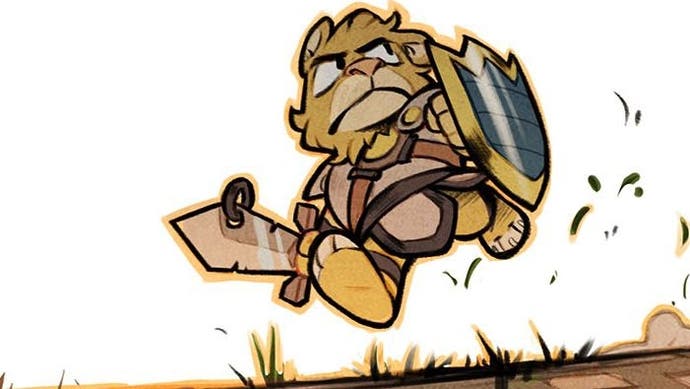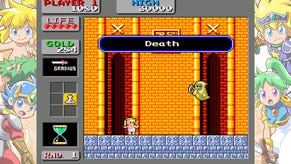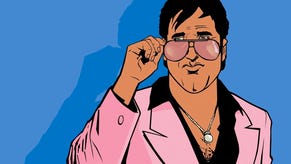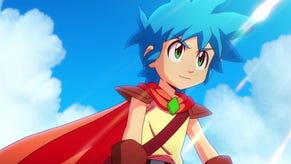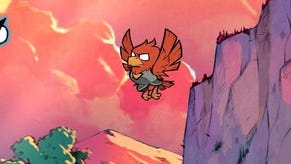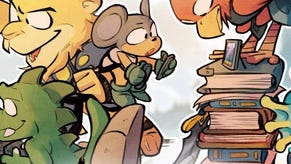The remaking of an 8-bit classic
Inside the wonder of Wonder Boy: The Dragon's Trap
A mist of enigma still hangs softly over the 8-bit era. These were games to be discovered, their mysteries charted over long summer afternoons spent drawing up maps on graph paper and scribbling notes in the handily provided blank pages at the back of manuals, entire worlds embedded in the thinnest slivers of code. And some games weave a stronger magic than others.
Think of the 8-bit era's adventure masterpieces and the original Legend of Zelda comes to mind; on the flipside, though, was Sega's own series of enigmatic epics - the Wonder Boy series, which for some people was their Legend of Zelda. For Omar Cornut it most certainly was - his first taste of games came through Sega's early 8-bit hardware, and when moving back to France from a couple of years away in Egypt, he picked up a Master System.
"It was my most loved console," he tells me as we chat over breakfast in an Islington cafe. "It was Wonder Boy 3 that I played first - I borrowed the cartridge from my friend, and it's a game we played for months at a time, mapping it out and finding its secrets."
Cornut's career in video games has taken him various, wonderful places - working on the brilliant DS title Soul Bubbles with artist Ben Fiquet in 2008; putting in a stint at Q-Games for PixelJunk Shooter; helping Media Molecule bring Tearaway to life in 2011 - but at its backbone there's always been a programmer's inquisitiveness met with an aficionado's passion which has often paved the way back to Sega's 8-bit consoles.
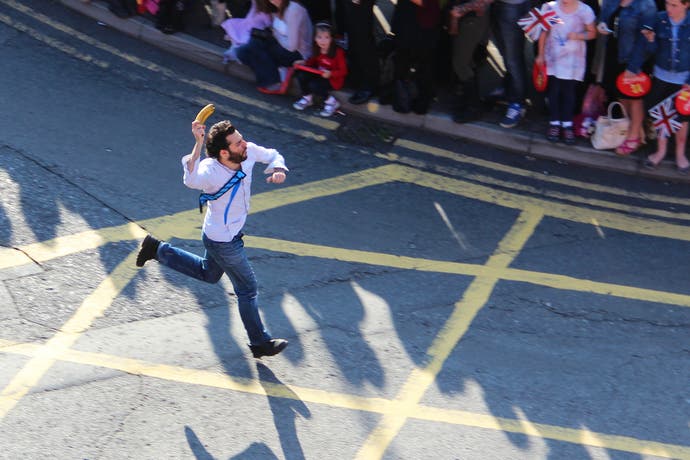
"When I started playing with emulation, I was drawn to those consoles. It's more an emotional thing - it's what I had, and it was my first love," says Cornut, whose love led to the creation of MEKA, an emulator that covers the wide gamut of Sega's 8-bit era, bringing together the Game Gear, the Master System as well as hardware that's not so familiar in the west such as the SG-1000, SF-7000 and SC-3000.
"It was for preservation," says Cornut of his motivation. "Someone has to preserve these games, and it just so happened I released an emulator that was kind of popular. The readme file that came with MEKA said you could register the product by sending me a cartridge - so before I knew it I had 1000 games at home. People knew I was making digital copies of these games, so they'd give them to me cheaper, or for free.
"The work wasn't trivial - at the time it was a mix of the information out there and what I invented while mashing the keyboard, doing stuff without fully understanding how and why. The reason it was successful was that I was more interested in polishing. That's what made it popular. It was hard for an 18-year-old at the time. It's not something that's hard today."
MEKA might have been the slightly fumbled work of a passionate 18-year-old, but nevertheless it was work that was vital for an industry that's constantly in danger of losing touch with its past. "The 8-bit and 16-bit consoles are mostly preserved," Cornut says. "Really early computer stuff though, all the stuff from the 80s on Japanese computers, the floppy disks are becoming demagnetised. Things have got really mouldy, and games are just being completely lost, like all the very early Square games from 81/82, these kind of things are being lost. People say that companies should preserve their games themselves - but it's hard, because if Sega Japan was to preserve games they'd preserve only official stuff, whereas I also wanted to go for the unlicensed stuff that come from Brazil and so on."
Which makes so much of games history before a certain point a patchy mystery, with new discoveries being made all the time. "Only recently we found a PAL Game Gear release of Surf Ninjas that we didn't know existed," says Cornut. "Someone found one in Hong Kong, and it's legit - and we don't really know where it came from. It could be an early print, they could have cancelled it."

Cornut remains a preserver of 8-bit history, then, but there's one game in particular that he kept returning to. When working with emulators, Wonder Boy 3 stood out as one of the most special, and when Cornut started tinkering with homebrew around the same time one of the first things he did was make an unofficial sequel. Around five years ago, he started thinking about doing something a little more official.
"I started looking at the ROM for Wonder Boy 3, looking at the original code. It's a game with a lot of mystery - invisible doors, objects that drop in certain places - there's a lot of mystery to it, and I wanted to look at it from an engineering point of view, at the drop rates and whatever. In doing so I had enough data to be able to make an accurate prototype from it - and I knew that [artist and Soul Bubbles collaborator] Ben Fiquet was a big fan of Sega systems, so I asked if he wanted to help me make this prototype."
And that meant approaching Wonder Boy's original creator Ryuichi Nishizawa - someone who was already familiar with Cornut thanks to his work in the 8-bit scene, as well as for his enthusiasm for Wonder Boy. "I hadn't personally met him at the time - he was the sort of person I'd send an email to 20 years ago saying 'hire me, I want you to make a new Wonder Boy!', so he knew my name. Back in 2010 I sort of mentioned I wanted to do something with Wonder Boy - and he could see I was a serious games programmer. Eventually we pitched it - we had a prototype that was pretty simple, it had the dual visual style, and we sent a video and screenshots. He was very happy with it, and he gave us an informal nod."
Nishizawa owned the IP, but Sega owned the trademark - for a time, Cornut considered sidestepping the issue altogether by adopting a different title, with artist Fiquet suggesting the beautifully wistful The Boy and the Dragon - but when publisher DotEmu came onboard with the project the tricky legal side was taken care of. Nishizawa, meanwhile, was consulted throughout.
"We showed him the game and he gave us feedback, though it wasn't day to day. The reality is that they don't know the game as well as you do at this point. He loves it, it's his favourite game that he's made, but he's not been reverse-engineering his code recently to work out the drop rates of hearts of whatever. These are the kinds of things you just forget."
The only time Nishizawa interjected was when Wonder Girl - a brand new character devised for the remake - was going to be modelled after Asha, a character in Wonder Boy 4, but it was pointed out the two games took place in worlds that never crossed over so that wouldn't make sense. That aside, Wonder Boy and the Dragon's Trap is a work of remarkable authenticity - even if some things did have to change in the move to more modern hardware. A new 16:9 screen ratio as opposed to the 4:3 of old meant some level design had to be altered, while physics were also improved.
But underneath it all is that same game, there to be seen again in its 8-bit splendour with the touch of a button. What's fascinating about Cornut and Fiquet's remake is the interpretation - and the little details that emerge in the transition between the old and new. Take the animation, for example. "Well there wasn't any animation!," Cornut says of the original. "To respect the timing and the collision, you can't add that much. Luckily the original was 30 frames per second, which was unusually slow for the time. It's a bit laggy, so when you press attack, the animation is two frames of animations - and that gives us four frames of animation at 60 frames per second."
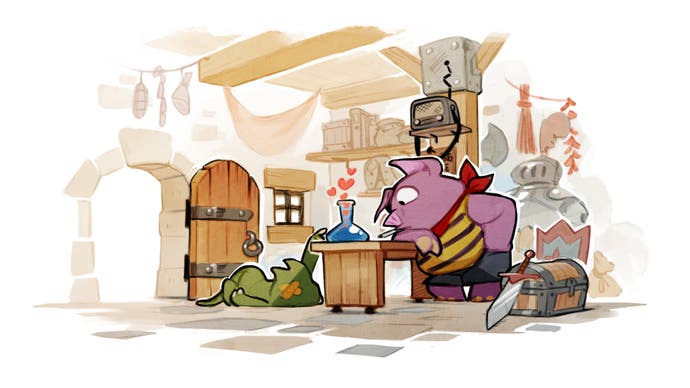
Switch between the 8-bit style and the new version of Wonder Boy and it can feel deceptive - the animation is more expressive, giving it all a very different feel. I'd convinced myself that the underlying physics to the two versions are different, but that's not the case.
"That friction was in the original," says Cornut. "We added the animation for the turning, and it made it less annoying, so to speak. It makes more sense. The movement and the physics are all the same, though, it's just that you can see them drift and turn. If you look at it frame by frame, what you don't realise when you're playing it, is that we flipped the sprites - during this animation, it actually swaps the shield and the sword during the animation. It's something you'd never normally think about. This game and the original had different sprites for the left and right-facing characters - the sword's always on the right side, which was very unusual for a game of this time. That's the only thing we didn't do in our version - it was just too much work to animate everything twice."
When it released last April, Wonder Boy: The Dragon's Trap went on to no small amount of success - given a significant uplift at the time by being one of the early games on the Switch's eShop - and it marked the end of an intense period of work for Cornut. Given how much affection he had for the game, did he ever end up hating Wonder Boy 3 at any point during the remake's development?
"No, I never hated it! There were moments when I was thinking why am I working like crazy to make an 8-bit game. It's more a question of what I'm doing with my life, though, than disliking the game! But really it was a childhood dream to make something with this game, and 99 per cent of the original fans seem to love it."
Who, I'm curious to know, was that one per cent?
"Oh, it's always people saying stuff like why did you make it easier, why's it not respectful of the old game... But you know, one per cent, that's pretty good. It's good - when you do a remake, it's really easy to make people unhappy, and to reach new players makes me really happy."
As an existing player, one who was already intimate with every inch of Wonder Boy 3 and went in to unwrap some of the game's enigmas, I wonder what he discovered. "We didn't find secret rooms or anything - but we started to understand a lot of subtle rules that we didn't know. I got the drop stats for every monster in the game - things like that give you this extra feel for the game. Every monster has different drop stats, so you tend to get health on a certain floor, you tend to get these items at certain points. And then you discover you can get this armour for free in certain ways... In the code we found the yellow monsters - but they weren't used in the original, so we added them in."
As to what comes next from Cornut, he's currently occupied with another passion project - ImGui, an open source UI library for C++ that's currently supported on Patreon - while another game seems a small while off. "Ben is inclined to make a remake again, I'd like to make a new game. We're still not sure. If it's a remake it has to be something that's aged okay, that people love, that's old enough that the upgrade makes sense - I don't know many games where all these things align. From an art point of view, it makes sense to make an 8-bit game - and not many of those have aged well."
And would there be any dream 8-bit games he could apply the same approach as Wonder Boy: The Dragon's Trap on?
"Zelda," he replies in an instant. "The first one is a better game - everyone seems to agree - but the second, it's a game that could have been better. Which makes it a good candidate - we can take this game that was a bit flawed and actually improve it. It'd make sense... But the first Zelda, if you remade it, I don't think I'd change anything. And if you did change anything, people would riot. But anyway it's Nintendo, so..."
